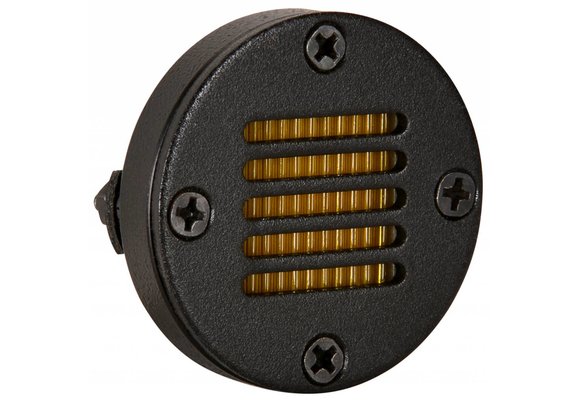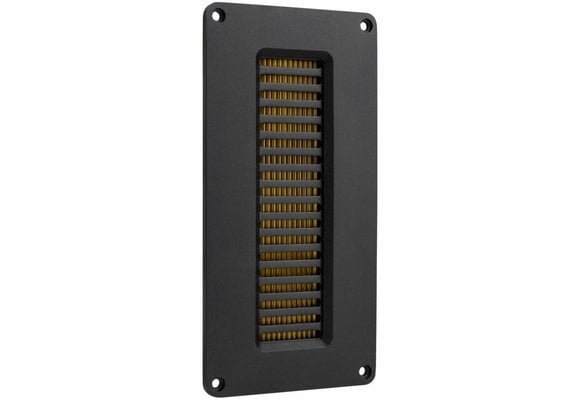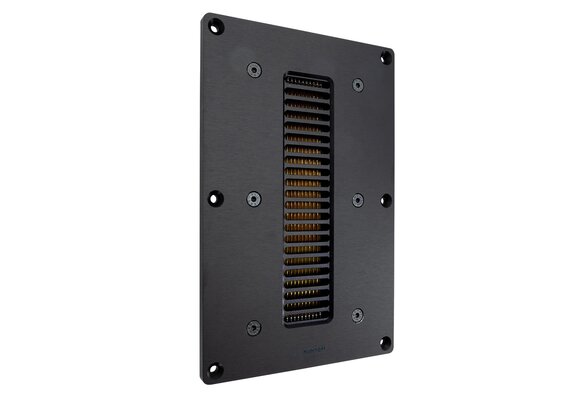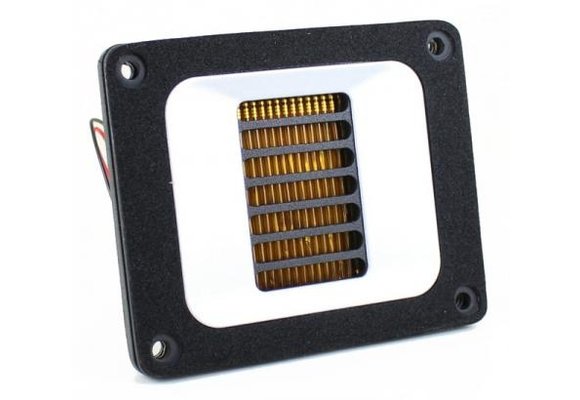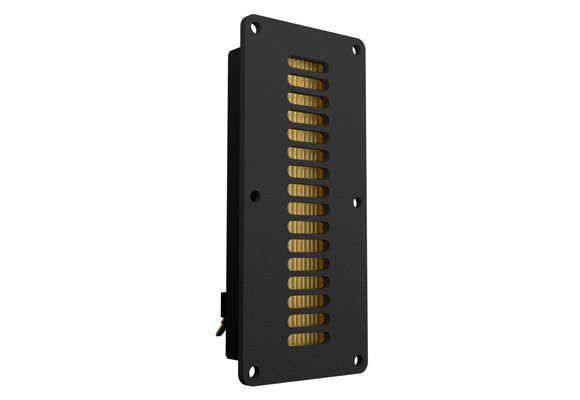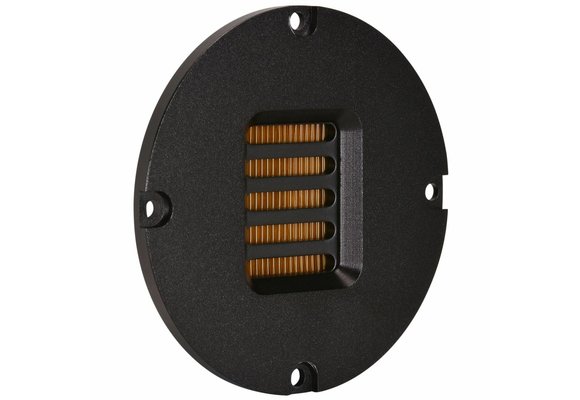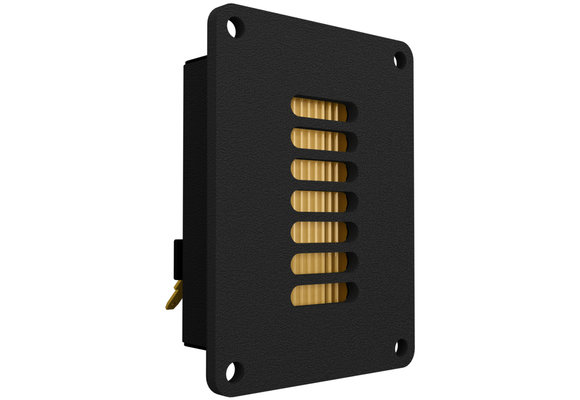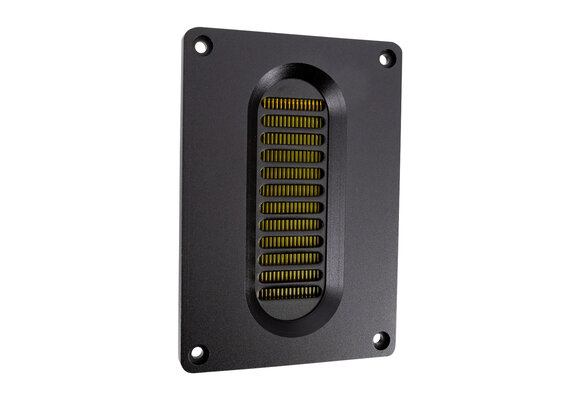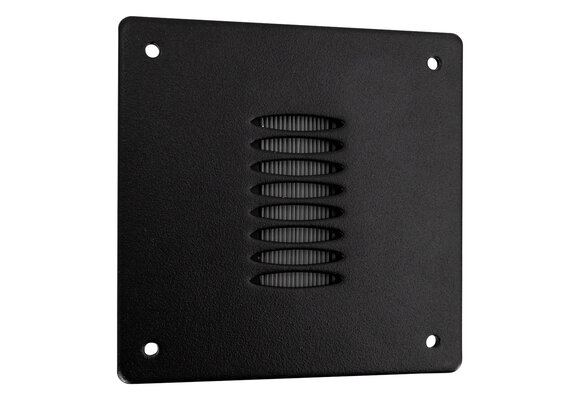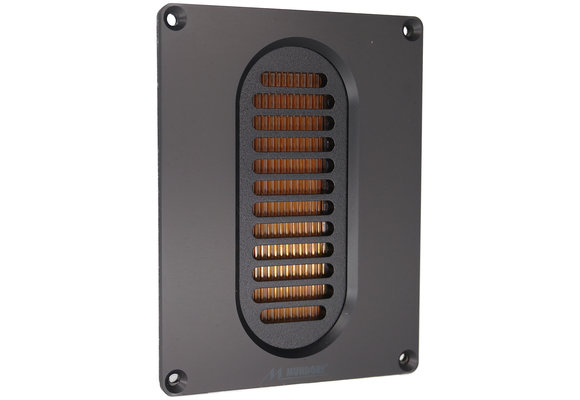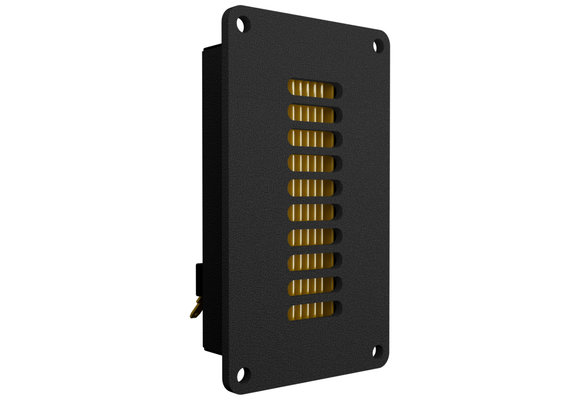What is an AMT tweeter?
For DIY audio enthusiasts looking for a unique tweeter with excellent performance, the AMT tweeter is an interesting option. AMT stands for Air Motion Transformer and was invented in the 20th century by scientist and physicist Dr Oskar Heil. The AMT tweeter differs from other loudspeaker designs such as moving coil, planar-magnetic or electrostatic driven speakers in that it uses a different transduction principle. An AMT tweeter should also not be confused with a planar tweeter or true ribbon tweeters.
Unlike a planar ribbon tweeter, the AMT's diaphragm has a bellows-like pleated shape. Using a folded sheet of polyethylene terephthalate (PET) film with metal etching, the AMT moves air sideways in a perpendicular direction. An AMT tweeter can reproduce sound up to 650 Hz and is particularly suitable for high frequencies. In high-end multi-driver speakers, the AMT tweeter is sometimes used as a midrange tweeter or in combination with horns.
How does an AMT tweeter work?
To pump air through the reed chambers, the diaphragm physically moves back and forth in a motion similar to that of an accordion being pulled in and out, albeit over a much smaller range of motion. Due to the extremely low mass of the polyethylene substrate and the significantly shorter distance it travels with each "swing" compared to a dynamic driver, the result is a dipole driver with an incredibly fast response. In a technical sense, it shares characteristics with an electrostatic driver. Order high-quality AMT tweeters from well-known brands such as Dayton Audio, Monacor, Mundorf, Dynavox and SB Acoustics at SoundImports.
For the DIY'er diving deeper into the technology: each diaphragm bending moves very little air, but due to the folded structure, more air is moved than by an electrostatic or conventional cone driver with the same expanded surface area. In terms of area comparison, the functional driver area of an 8-inch (200 mm) round dynamic cone is comparable to a standard 1-inch (25 mm) wide AMT strip.
Due to its folded driver design and small motion range, the AMT behaves like a point source version of a larger driver, which naturally leads to lower sound reproduction distortion. The name "Air Motion Transformer" comes from the fact that the speed of air as it leaves the diaphragm is about five times that of the driver structure.

 Home audio
Home audio  Audio components
Audio components  Crossover components
Crossover components  Test & measurement
Test & measurement  DIY kits
DIY kits  Accessories
Accessories  New products
New products  Speakers
Speakers Amplifiers
Amplifiers DAC converters
DAC converters DSP modules
DSP modules Turntables
Turntables Streamers
Streamers Woofers
Woofers Tweeters
Tweeters Exciters
Exciters Bass shakers
Bass shakers Plate amplifiers
Plate amplifiers Amplifier modules
Amplifier modules Single board computers
Single board computers Assembled crossovers
Assembled crossovers Printed Circuit Boards (PCB)
Printed Circuit Boards (PCB) Capacitors
Capacitors Resistors
Resistors Coils
Coils Circuit Breakers
Circuit Breakers Crossover tools
Crossover tools Screw terminals
Screw terminals Acoustic measurements
Acoustic measurements Electric measurements
Electric measurements Sound level meters
Sound level meters DIY amplifier kits
DIY amplifier kits DIY component packs
DIY component packs DIY speaker kit
DIY speaker kit DIY subwoofer kits
DIY subwoofer kits DIY bluetooth speaker
DIY bluetooth speaker DIY electronics kits
DIY electronics kits Binding posts
Binding posts Cabinet Hardware
Cabinet Hardware Cables
Cables Connectors
Connectors Speaker cabinets
Speaker cabinets Electromechanics
Electromechanics Power supplies
Power supplies Speaker repair
Speaker repair Workshop & tools
Workshop & tools Amplifier accessories
Amplifier accessories Stands & mounts
Stands & mounts Gift voucher
Gift voucher Books
Books New products
New products









 Speakers
Speakers Amplifiers
Amplifiers DAC converters
DAC converters DSP modules
DSP modules Turntables
Turntables Streamers
Streamers Woofers
Woofers Tweeters
Tweeters Exciters
Exciters Bass shakers
Bass shakers Plate amplifiers
Plate amplifiers Amplifier modules
Amplifier modules Single board computers
Single board computers Assembled crossovers
Assembled crossovers Printed Circuit Boards (PCB)
Printed Circuit Boards (PCB) Capacitors
Capacitors Resistors
Resistors Coils
Coils Circuit Breakers
Circuit Breakers Crossover tools
Crossover tools Screw terminals
Screw terminals Acoustic measurements
Acoustic measurements Electric measurements
Electric measurements Sound level meters
Sound level meters DIY amplifier kits
DIY amplifier kits DIY component packs
DIY component packs DIY speaker kit
DIY speaker kit DIY subwoofer kits
DIY subwoofer kits DIY bluetooth speaker
DIY bluetooth speaker DIY electronics kits
DIY electronics kits Binding posts
Binding posts Cabinet Hardware
Cabinet Hardware Cables
Cables Connectors
Connectors Speaker cabinets
Speaker cabinets Electromechanics
Electromechanics Power supplies
Power supplies Speaker repair
Speaker repair Workshop & tools
Workshop & tools Amplifier accessories
Amplifier accessories Stands & mounts
Stands & mounts Gift voucher
Gift voucher Books
Books New products
New products
